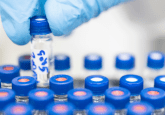Raman to the rescue: combatting the hidden fentanyl crisis in counterfeit pills

Two research teams have developed advanced Raman spectroscopy techniques to rapidly identify fentanyl-laced counterfeit drugs, offering solutions for detecting these illicit substances in forensic toxicology labs.
The growing crisis of fentanyl-laced counterfeit prescription drugs has led to a surge in accidental overdoses, due to many consumers unknowingly taking these dangerous drugs. To combat this growing issue, two different research teams from Indiana University (IN, USA) and Florida International University (FL, USA) have developed novel analytical detection tools utilizing surface-enhanced Raman scattering (SERS) spectroscopy. These tools address the urgent need for advanced analytical techniques that can rapidly and accurately detect illicit substances. Both teams’ findings will be presented at Pittcon (March 1–5, 2025; MA, USA).
Fentanyl was first developed as an intravenous anesthetic in 1959 and is now one of the most commonly used and important opioids in the treatment of pain. The highly addictive nature of fentanyl, combined with over-prescription and weak regulations, has driven its widespread misuse. According to the National Center for Drug Abuse Statistics, Fentanyl is a factor in over half of overdose deaths worldwide. To put the severity of this into context, fentanyl is around 100 times more potent than morphine, and 50 times more potent than heroin as an analgesic. Counterfeit pharmaceuticals disguised as reputable brands like Xanax and OxyContin often contain fentanyl instead of the intended active ingredient, leading to accidental overdoses. The production of fentanyl counterfeits has dramatically risen, highlighting the importance of detecting illicit substances.
Chemical color tests are used as a traditional method for forensic drug analysis; however, they have limited specificity and often fail to detect many synthetic drugs. While alternative techniques such as chromatography and immunoassays offer greater sensitivity, they still lack the molecular specificity to accurately identify fentanyl counterfeits. This is where Raman spectroscopy comes in.
Raman spectroscopy is an analytical technique that uses laser light to identify substances based on their unique molecular vibrations, offering high molecular selectivity and specificity for chemical and biological analysis. Its advanced form, SERS, enhances detection by utilizing nanostructured metal surfaces to amplify signals, enabling the identification of even trace amounts of a substance with higher sensitivity and precision. This makes SERS a vital tool in forensic science and drug detection, particularly in the identification of illicit substances.
You may also be interested in:
- Pittcon Conference and Exposition 2025
- Infographic: Doping at the Olympic Games – past, present and future
- What is toxicology?
The Indiana University team has developed an analytical platform that combines SERS and substrate-supported electrospray ionization mass spectrometry for ultra-sensitive drug detection. The system features metal nanoparticle-decorated micropillar arrays made from porous, hydrophilic polydimethylsiloxane, designed to enhance both Raman signal amplification and drug preconcentration for mass spectrometry analysis. This innovative approach enables simultaneous detection of synthetic drugs, including fentanyl analogs, in blood plasma. This technology holds significant promise for forensic toxicology labs.
“[This methodology] has the unique potential to detect, quantify and identify the most potent drugs from human biofluids with a minimum sample preparation,” commented lead scientist Rajesh Sardar, Professor of Chemistry and Chemical Biology at Indiana University.
Led by Bruce McCord, Professor of Analytical and Forensic Chemistry, the research group from Florida International University has explored the use of nanostar-based colloids for the rapid and highly sensitive detection of illicit drugs. By using portable Raman spectrometers, the lab has achieved detection limits at sub-nanogram levels. Their findings will illustrate the successful identification of fentanyl analogs, even within mixtures and seized drugs, demonstrating promising potential for regulating counterfeit pharmaceuticals.
The teams’ innovative techniques illustrate how Raman spectroscopy techniques, including SERS, are leading the way in identifying counterfeit pharmaceuticals. Their continued development will be essential for the effective regulation of illicit fentanyl, helping to combat the rise of fake prescription pills.






